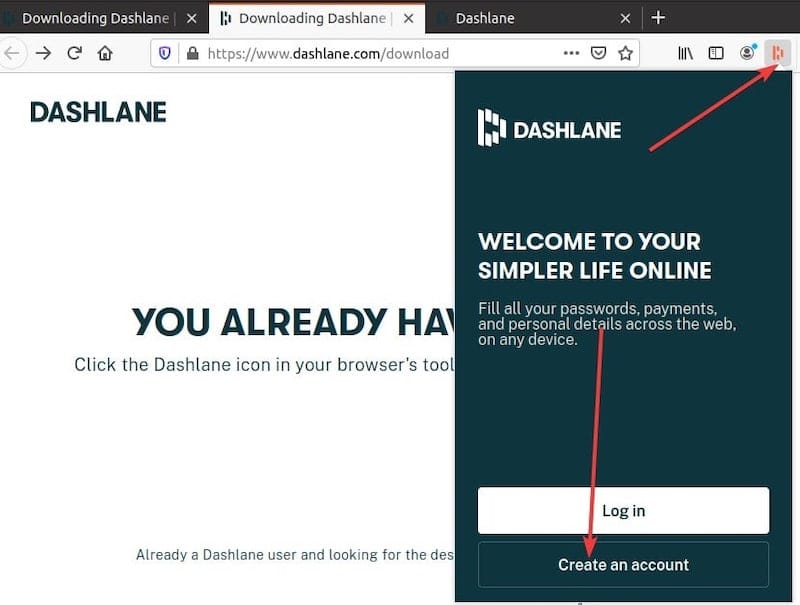How To Install Dashlane Password Manager on Ubuntu 24.04 LTS

In today’s digital age, managing passwords securely is crucial for protecting your online identity and sensitive information. Dashlane, a popular password manager, offers a robust solution for Ubuntu users looking to enhance their cybersecurity. This comprehensive guide will walk you through the process of installing Dashlane Password Manager on Ubuntu 24.04, ensuring you can safeguard your digital life with ease.
Understanding Dashlane
Dashlane is a feature-rich password management tool that helps users create, store, and manage complex passwords across multiple devices and platforms. It offers both free and premium versions, catering to different user needs and preferences.
Free vs Premium Features
The free version of Dashlane provides essential password management features, including:
- Secure password storage for up to 50 accounts
- Password generator
- Form autofill
- Security alerts
For users requiring more advanced features, the Premium version offers:
- Unlimited password storage
- Cross-device synchronization
- Dark web monitoring
- VPN service
- Secure file storage
Browser Extension Functionality
Dashlane primarily operates through browser extensions, which seamlessly integrate with your favorite web browsers. These extensions enable automatic password filling, secure form completion, and easy access to your stored credentials.
Cross-Platform Capabilities
While Dashlane doesn’t offer a native Linux application, its browser extensions work flawlessly on Ubuntu 24.04, allowing users to enjoy its features across various operating systems and devices.
Security Features and Standards
Dashlane employs industry-standard encryption protocols to protect your data:
- AES-256 encryption for data at rest
- Zero-knowledge architecture
- Two-factor authentication (2FA)
- Biometric login options (on supported devices)
Prerequisites
Before diving into the installation process, ensure your Ubuntu 24.04 system meets the following requirements:
System Requirements
- Ubuntu 24.04 LTS (or later)
- At least 2GB of RAM
- 500MB of free disk space
- Active internet connection
Supported Browsers
Dashlane supports the following browsers on Ubuntu:
- Mozilla Firefox
- Google Chrome
- Chromium
- Microsoft Edge
Required Permissions
To function correctly, Dashlane’s browser extension requires permissions to:
- Access your browsing data
- Read and modify website content
- Store local data
Installation Process
Now that we’ve covered the basics, let’s proceed with the step-by-step installation of Dashlane on Ubuntu 24.04.
System Preparation
Before installing Dashlane, it’s crucial to ensure your system is up-to-date:
- Open the Terminal (Ctrl + Alt + T)
- Update your package list:
sudo apt update - Upgrade installed packages:
sudo apt upgrade -y - Reboot your system if necessary:
sudo reboot
Browser Extension Installation
The installation process varies slightly depending on your preferred browser. We’ll cover the steps for Firefox, Chrome/Chromium, and Edge.

Firefox Installation
- Open Mozilla Firefox
- Navigate to the Dashlane Firefox Add-on page
- Click “Add to Firefox”
- Review the permissions and click “Add”
- Wait for the installation to complete
Chrome/Chromium Installation
- Open Google Chrome or Chromium
- Visit the Dashlane Chrome Web Store page
- Click “Add to Chrome”
- Confirm the installation by clicking “Add extension”
- Allow the extension to finish installing
Edge Browser Installation
- Open Microsoft Edge
- Go to the Dashlane Edge Add-ons page
- Click “Get”
- Review the permissions and click “Add extension”
- Wait for the installation to complete
Extension Verification
After installation, verify that the Dashlane extension is active:
- Look for the Dashlane icon in your browser’s toolbar
- Click on the icon to open the Dashlane popup
- If prompted, log in or create a new account

Configuration Steps
With Dashlane installed, it’s time to set up and configure your account for optimal use on Ubuntu 24.04.
Account Creation Process
- Click the Dashlane icon in your browser toolbar
- Select “Create an account”
- Enter your email address
- Choose a strong master password
- Complete the registration process by following the on-screen instructions
Master Password Setup
Your master password is the key to all your stored information. Ensure it’s strong and memorable:
- Use a combination of uppercase and lowercase letters, numbers, and symbols
- Make it at least 12 characters long
- Avoid using personal information or common phrases
- Consider using a passphrase for added security and memorability
Private Browsing Configuration
To use Dashlane in private browsing mode:
- Open your browser’s settings
- Navigate to the Extensions or Add-ons section
- Find Dashlane in the list
- Enable the option to “Allow in Private/Incognito mode”
Extension Pinning to Toolbar
For quick access, pin the Dashlane extension to your browser’s toolbar:
- Click the extensions icon in your browser (usually a puzzle piece)
- Find Dashlane in the list
- Click the pin icon next to Dashlane
Security Settings Optimization
Enhance your Dashlane security by configuring these settings:
- Enable two-factor authentication (2FA)
- Set up biometric login if your device supports it
- Configure auto-logout settings
- Enable dark web monitoring (Premium feature)
Using Dashlane on Ubuntu
Now that Dashlane is installed and configured, let’s explore its key features on Ubuntu 24.04.
Password Generation
To create strong, unique passwords:
- Click the Dashlane icon in your toolbar
- Select “Password Generator”
- Adjust length and character types as needed
- Copy the generated password or save it directly to your vault
Auto-fill Functionality
Dashlane can automatically fill in your login credentials:
- Navigate to a login page
- Click on the username or password field
- Select your credentials from the Dashlane popup
- Dashlane will fill in the information automatically
Form Filling Features
Save time by letting Dashlane fill out forms:
- Store personal information in your Dashlane vault
- When encountering a form, click the Dashlane icon in the field
- Choose the information you want to fill
- Dashlane will populate the form fields instantly
Secure Notes Management
Store sensitive information securely:
- Open the Dashlane extension
- Navigate to “Secure Notes”
- Click “Add new” to create a new secure note
- Enter your information and save
Payment Information Storage
Safely store and use payment details:
- Access your Dashlane vault
- Go to “Payment” section
- Add new credit card or bank account information
- Use this information for quick and secure online purchases
Troubleshooting Common Issues
While Dashlane generally works smoothly on Ubuntu 24.04, you might encounter some issues. Here are solutions to common problems:
Extension Not Loading
- Disable and re-enable the extension
- Clear browser cache and cookies
- Uninstall and reinstall the extension
Sync Problems
- Check your internet connection
- Ensure you’re logged in to your Dashlane account
- Force a manual sync through the extension settings
Browser Compatibility Issues
- Update your browser to the latest version
- Try using a different supported browser
- Check Dashlane’s official documentation for known issues
Authentication Errors
- Verify your master password
- Ensure your account hasn’t been locked due to too many failed attempts
- Contact Dashlane support if issues persist
Best Practices and Security Tips
Maximize your security with these best practices:
Master Password Management
- Never share your master password
- Change it periodically (every 3-6 months)
- Use a unique master password not used for any other accounts
Two-Factor Authentication Setup
- Enable 2FA in your Dashlane account settings
- Choose between authenticator app, SMS, or U2F security key
- Follow the setup wizard to complete the process
Regular Security Audits
- Use Dashlane’s Password Health feature to identify weak or reused passwords
- Review and update your stored information regularly
- Check for any unauthorized access attempts
Backup Strategies
- Enable automatic backups in Dashlane settings
- Periodically export your data (encrypted) as a local backup
- Store backups securely, preferably on an encrypted external drive
Limitations and Considerations
While Dashlane offers robust password management on Ubuntu 24.04, be aware of these limitations:
Linux-Specific Limitations
- No native desktop application for Linux
- Limited integration with system-wide password management
Browser Restrictions
- Functionality limited to supported browsers
- May not work with all browser extensions or custom configurations
Free Version Constraints
- Limited to 50 passwords
- Single-device usage only
- No cross-device syncing
Premium Features Availability
- Some advanced features require a Premium subscription
- VPN and Dark Web Monitoring may have limited functionality in certain regions
Congratulations! You have successfully installed Dashlane. Thanks for using this tutorial for installing Dashlane Password Manager on Ubuntu 24.04 LTS system. For additional help or useful information, we recommend you check the official Dashlane website.